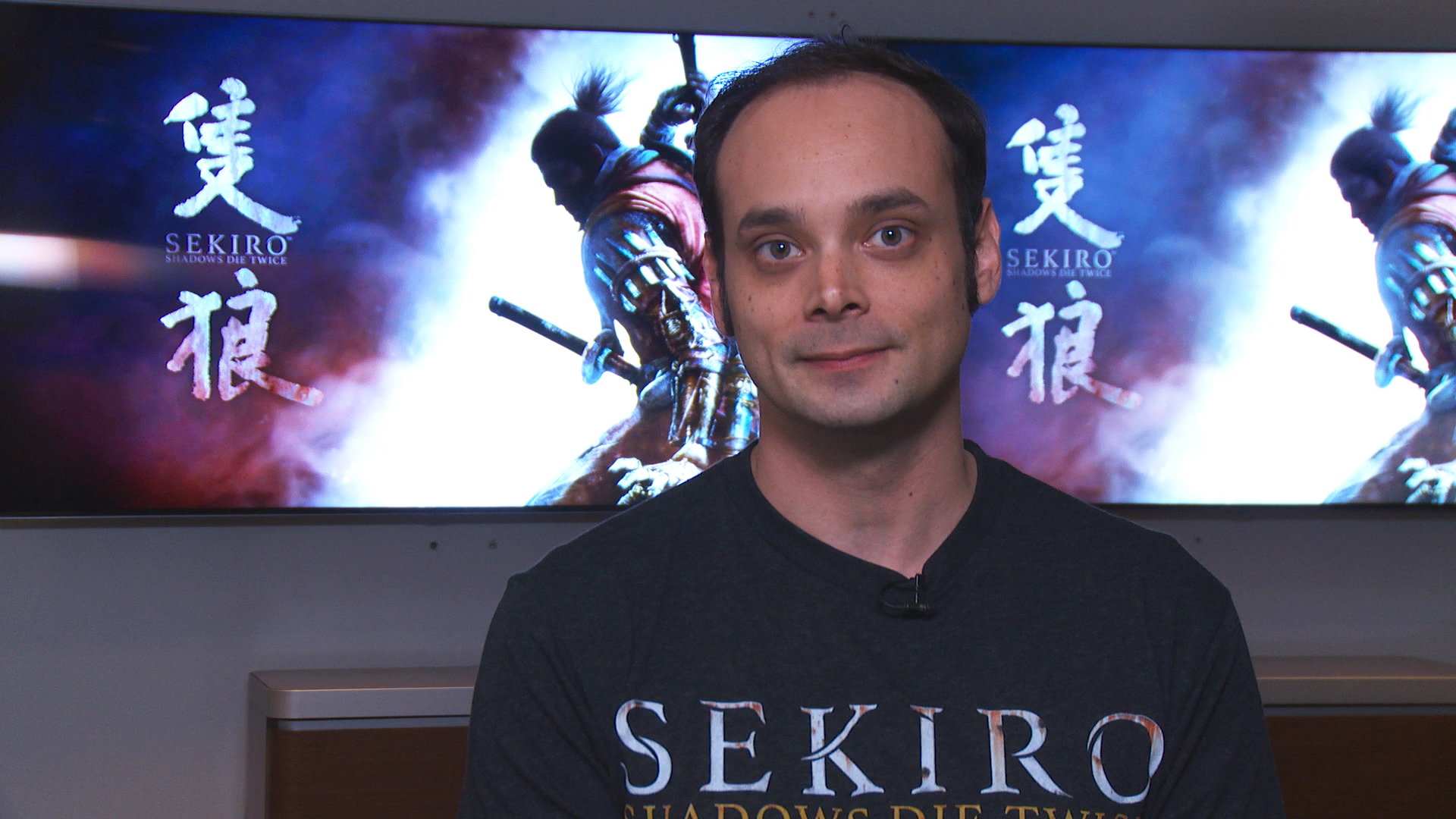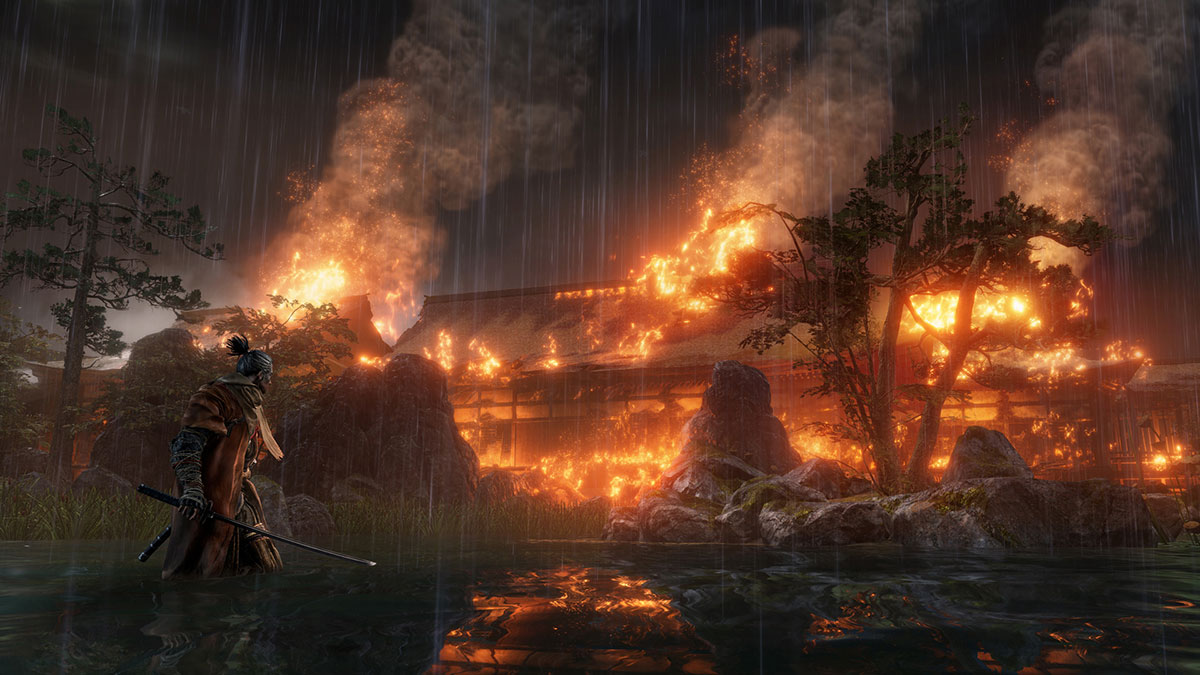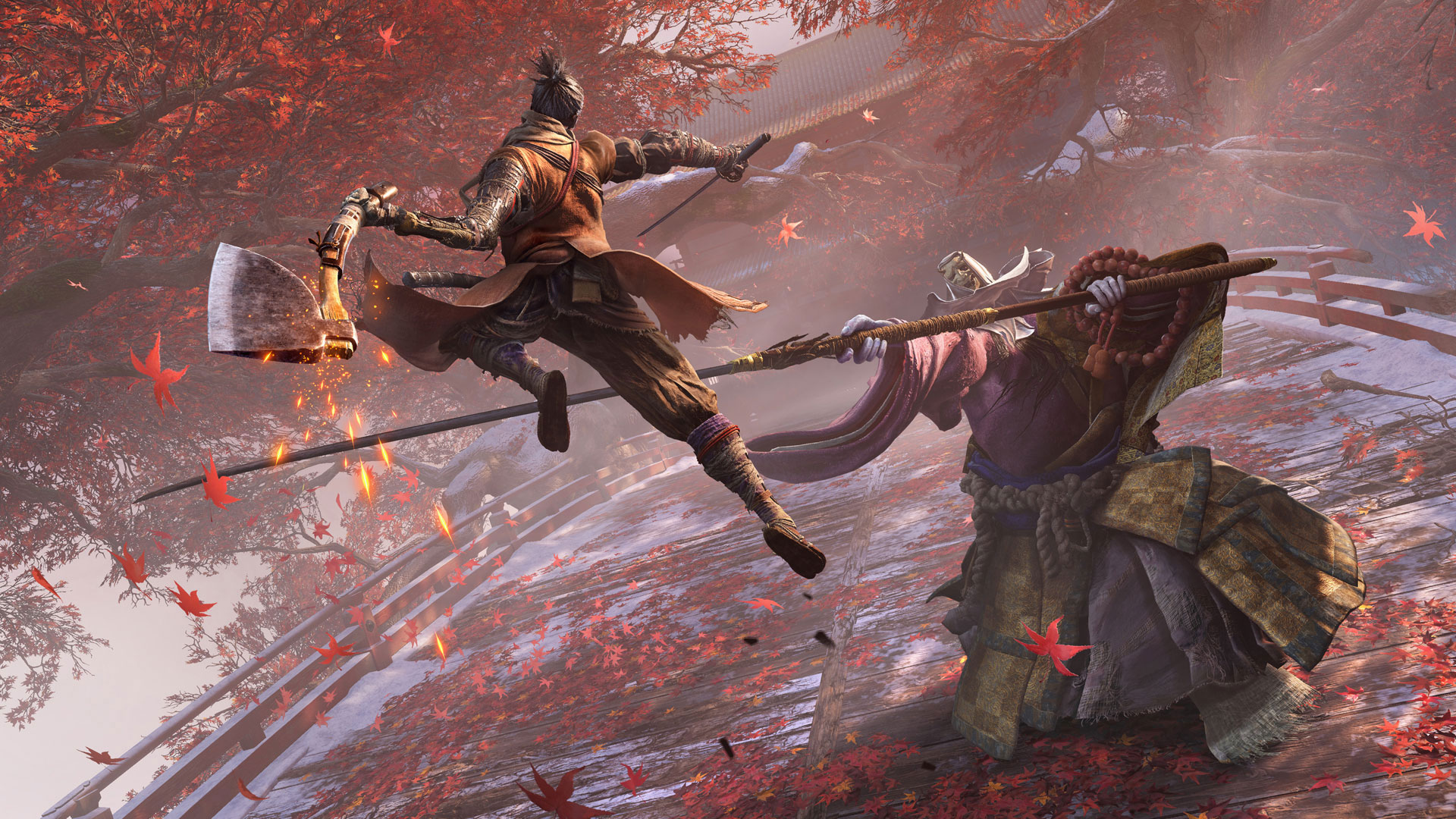AGB: What role does a Producer play in the creation of a game such as Sekiro: Shadows Die Twice?
Robert Conkey: My job is to ensure that production on the game is on schedule, at quality, and on budget. Responsibilities include obstacle and risk communication and mitigation, communicating with the developer, hiring third-party vendors and managing them and their costs, getting voice-over recorded, working with outsourcing groups, ensuring age ratings readiness, ensuring readiness for final submission to first parties, speaking as an expert on the game at press events, and much more.
I’m also the internal center of contact for the plethora of departments that are involved in the making of a game of this scale, including legal, quality assurance, customer service, localization, marketing, PR, and others.
Another part of my job is to know the game in and out, to know not only what’s in the game but what a developer is planning to change to ensure we’re making the best possible decisions as an organization, and that the message we’re communicating is correct.
AGB: What is a key quality you need for a job such as yours?
RC: You’ve got to be a pretty good multitasker to keep up with so many things coming at you from so many directions. Keeping a cool head when everything is on fire is pretty important.
AGB: What are the skills and qualities an employer would look for when hiring a Producer?
RC: When I’m looking for an Associate Producer or Production Coordinator, I’d want someone who is passionate about what they do, organized, flexible, experienced, doesn’t mind weird hours across multiple time zones, and has strong soft skills and game sense.
AGB: If someone wanted to have a job like yours, how would they go about getting one?
RC: There are many different ways to get into the industry. A common starting point is joining a testing team. Others take internships, [or] come into the industry partway after working in another one with cross-application such as finance.
Production is very specific and tends to be hard to get into, as there are usually not a large number of producers on a game, ranging from one to six for the biggest games out there.
I personally had a relatively rare way of breaking into the industry, where I was lucky enough to get a job at a Japanese developer for several years after studying the language in college, and then applied for a job with Activision after we’d worked with them directly.
AGB: How does your fluency in Japanese help the overall project?
RC: It helps communication for sure – we don’t have to rely on translators for live conversation or emails as much, which could have slowed things down a lot, especially with the time zone difference. Being able to speak to a developer directly means meetings are easier to schedule, and info flows more quickly. The downside is that I’m not a native speaker and my Japanese isn’t perfect, plus if we only have a conversation in Japanese then all of the onus is on me to ensure that what was discussed is accurately conveyed to our other groups such as QA and user testing.
AGB: What has been the most satisfying part of your work on Sekiro: Shadows Die Twice?
RC: Being a part of this game and working directly with FromSoftware has truly been an honor. It’s not often you get to work with a developer of their caliber. One of the most satisfying parts was seeing the game move from a super early prototype into something that gradually was fleshed out into more and more of a full gameplay experience. The other really satisfying part was when we announced and saw how excited fans were, it really had a positive impact on everyone’s motivation.
AGB: What are you looking forward to players experiencing when Sekiro: Shadows Die Twice is launched?
RC: FromSoftware has produced some pretty insane boss fights in this game, and I can’t wait for players to experience them. It’s going to be a lot of fun to watch players experience it on March 22.
AGB: What are your favorite gameplay mechanics that appear in Sekiro: Shadows Die Twice?
RC: The combat is, in my very biased opinion, fantastic. Despite the relatively simple controls, it is incredibly deep and also unique. I’ve never played a game that felt this way, and I hope it’s going to feel like a huge breath of fresh air for the fanbase.
AGB: Finally, what five tips would you give a someone preparing to play the game this Friday?
RC: Here are a few key bits of advice I’d give to players:
1) Interrupting your enemies during combat is extremely important; take charge of a fight, and take risks until you learn the extent of what you’re able to achieve; battle on the very edge of jeopardy. One recommended interrupt strike involves the Jump-kick, followed up by a hit from your prosthetic arm; the Chasing Slice is particularly potent.
2) Study every one of the Perilous attacks as soon as you can. This involves searching out Hanbei the Undying (he’s located in the grounds of the Dilapidated Temple), and training with him until you’ve finished everything he has to offer. Then visit Ashina Outskirts seek out the first Samurai General; defeat him and unlock advanced training options; only then can you begin to understand the unique and expert-level combat, which includes Perilous attacks.
3) Don’t forget to unlock your skills! One of the first to gain is the Mikiri Counter, which enables you to step on a foe’s weapon, but also allows you to much more easily encounter foes with spears and other troublesome longer-ranged melee weapons.
4) As you get your timing down in the heat of battle, a combination of sequential deflects and ferocious swordplay strikes is the way to take most foes down. If you don’t deflect, and think you’ll win by simply dodging, then expect a troublesome time against more potent boss foes. The practice it takes to deflect attacks to break an enemy’s posture takes practice to learn, but is the key to solving most tricky fights.
5) Having trouble with a mid-boss or more powerful entity? Then back out of the battle, learn new skills, increases your stats by exploring places you might have missed, and return later more battle-tested and ready to fight!
AGB: Thanks for your time, Robert!
Sekiro: Shadows Die Twice is available on March 22, 2019, for PlayStation®4, Xbox One, and PC. Pre-order it here… and remember: Take Revenge. Restore your Honor. Kill Ingeniously.
Interested in joining the team at Activision or one of our partner studios? We’ve been named one of Fortune’s Magazines Best Companies to work for, so check out the latest job listings and get in touch!
For further details about Sekiro: Shadows Die Twice, check out the Sekiro: Shadows Die Twice website, and follow them on Twitter, Facebook, and Instagram.


